Sony Xperia X Performance vs Apple iPhone 6s
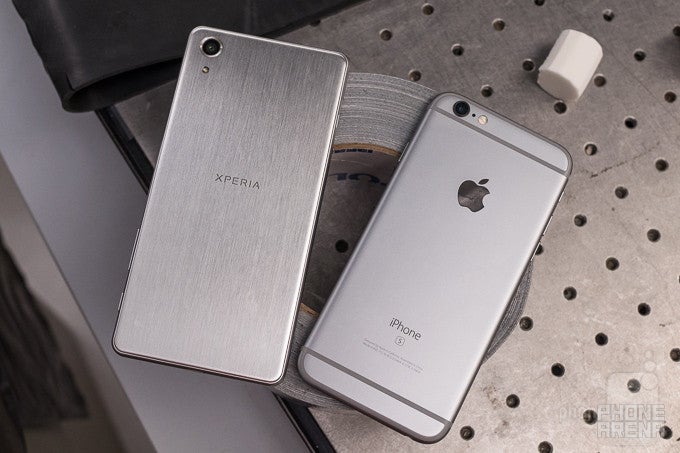
Introduction
Sony's got a new breed of smartphone in town, with the Xperia X lineup arriving to offer shoppers a variety of feature and performance options (with an emphasis on camera capabilities and battery life), all tied around a unified design. Of all those new models, the Xperia X Performance comes in as the best-equipped of the bunch, though as we noted in our recent review, even it's not without its trade-offs.
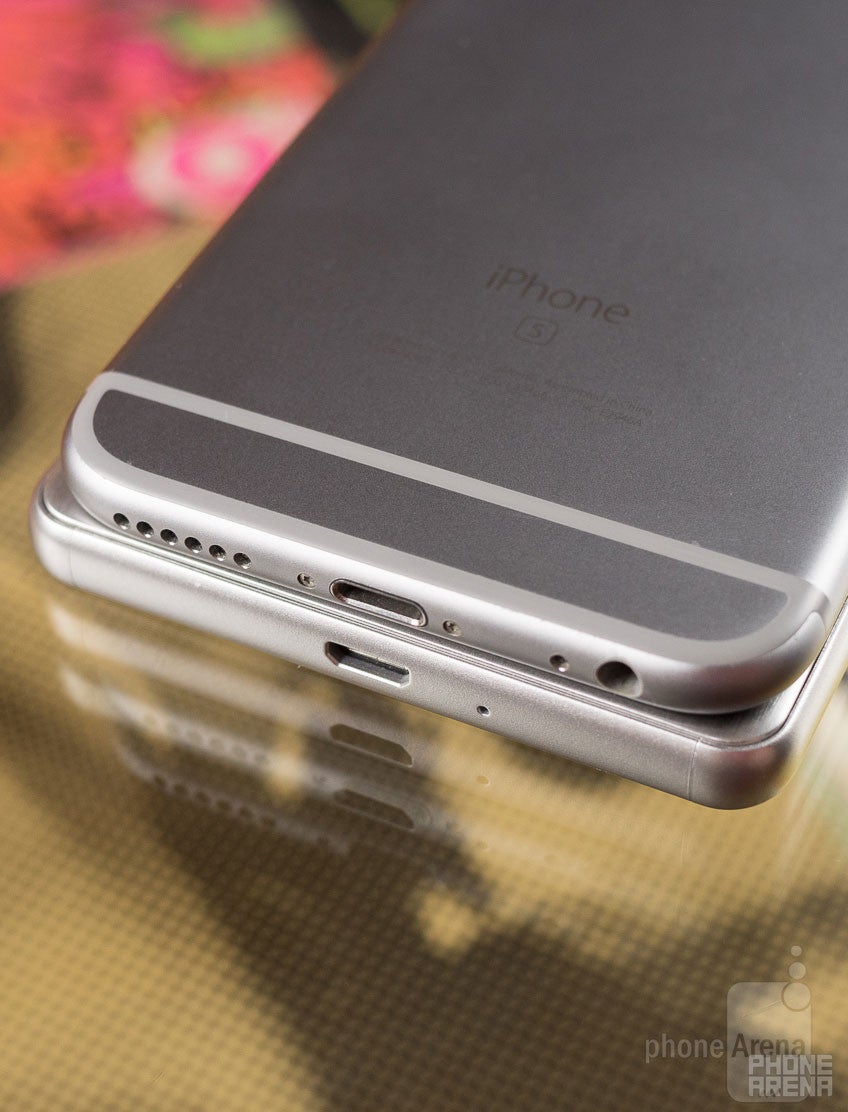
Design
The look and feel of metal-enclosed smartphones is hard to beat, with a premium aesthetic that plastic simply can't touch. Apple's really been nailing the metal construction for a while now, while Sony is turning its attention back to the material after a stint working with glass. The good news is that the Xperia X Performance looks like a million bucks, and its lack of antenna lines is an improvement over Apple's design.
That said, Apple implementation is more than a little bit better overall. For one, the iPhone's metal extends around the phone's edges, so your fingers are always in contact with it; Sony bows out for its edges and goes with a metal-looking plastic. And while Apple's back panel feels nice and solid, Sony's gives the impression of a thinner, less resilient metal sheet.
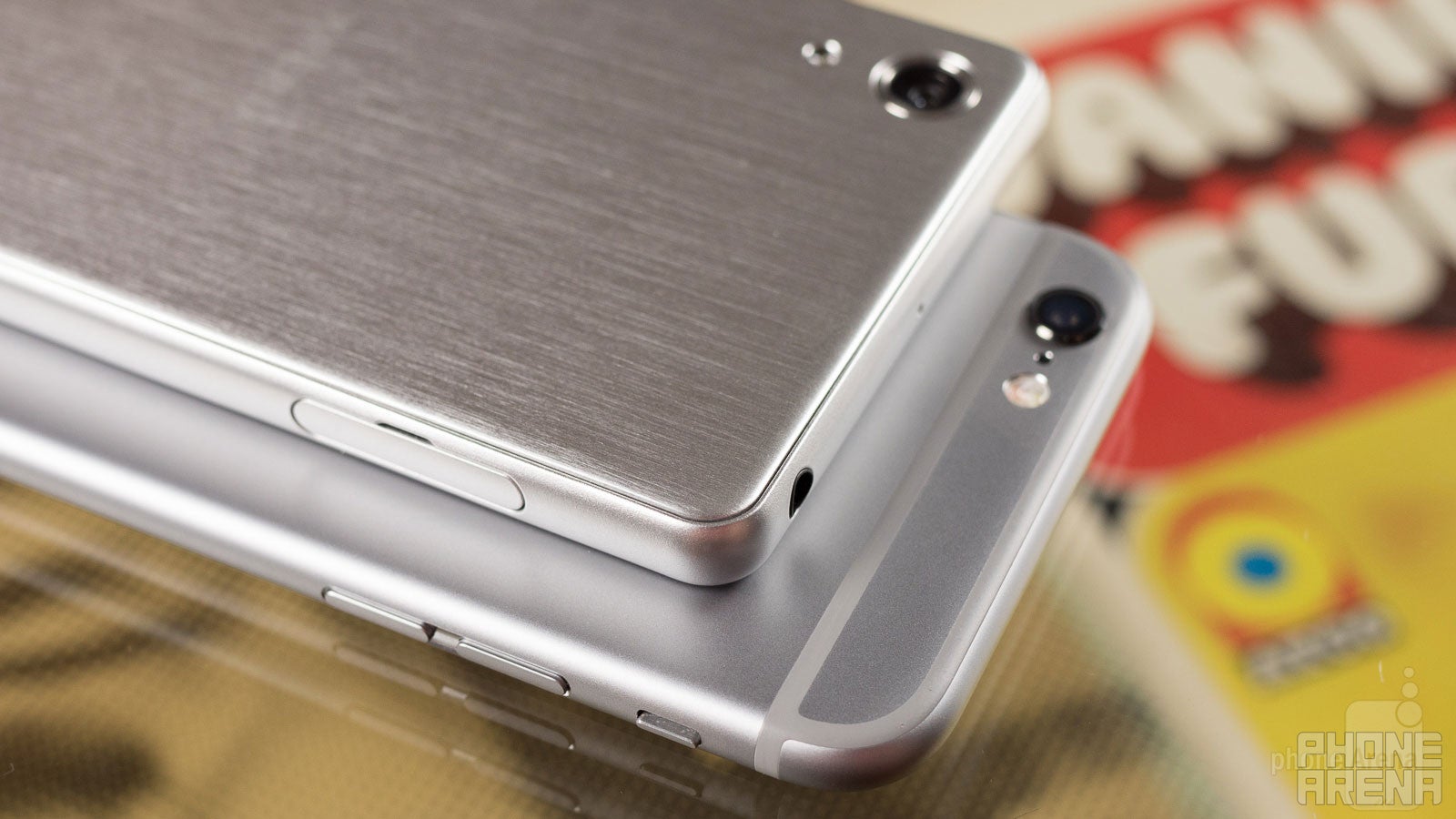
As for buttons, Apple gets points for its physically separate volume keys and mute switch, while Sony delivers a really low-mounted volume rocker that's in an easy-to-reach spot (if you're right-handed), as well as an always-welcome camera shutter button. Buttons on the iPhone 6s tend to be clickier overall, while those of the X Performance feel a bit shallow.
Unfortunately, Sony's recessed power button takes a bit of getting used to, and we're still sore that the US edition of the Xperia X Performance ditches the integrated fingerprint scanner – an area where the iPhone is the clear winner.
Display
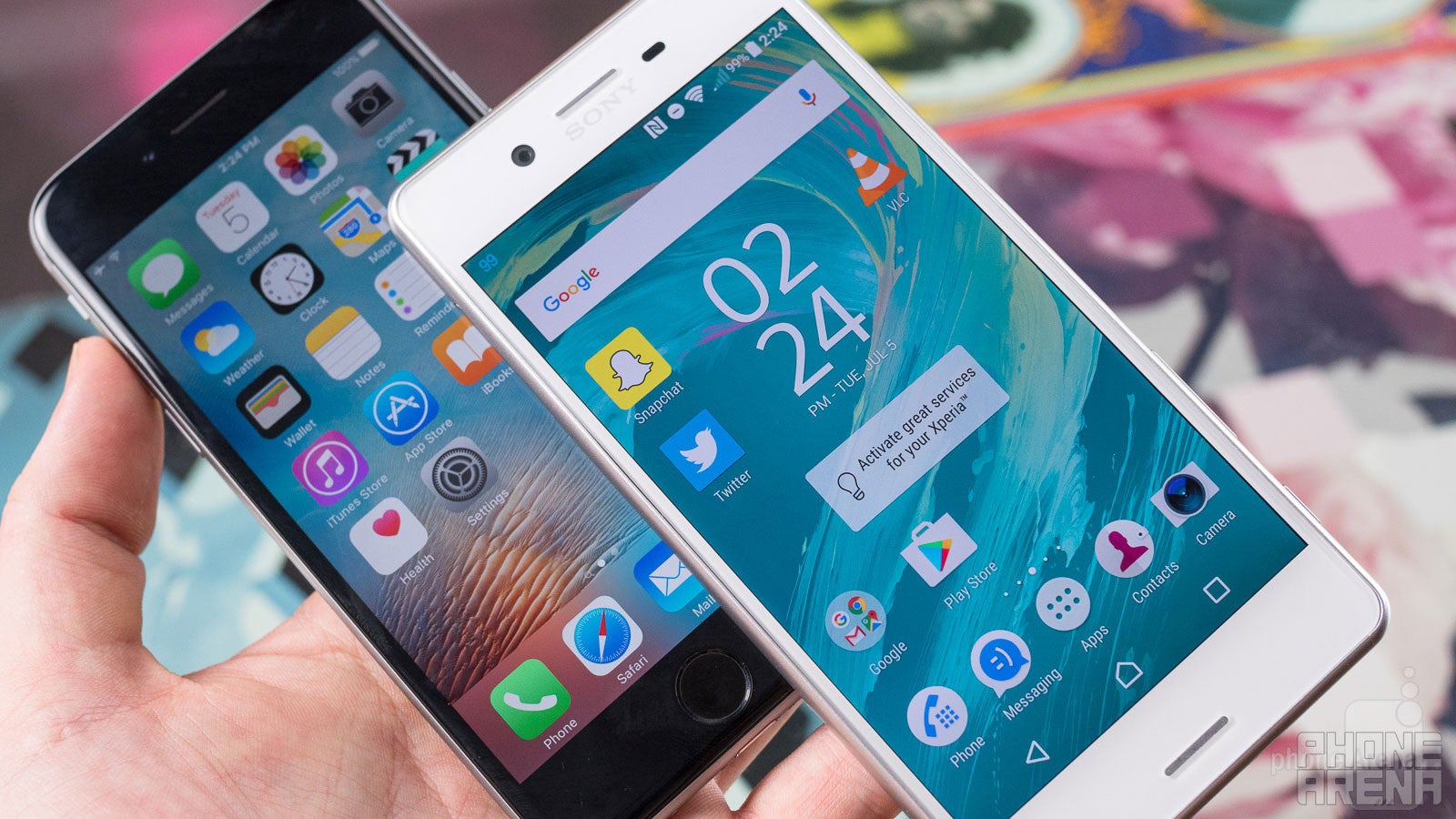
Both the Xperia X Performance and iPhone 6s offer some powerfully bright displays, and while the panels are configured a little differently – Apple going with a 4.7-inch screen in a 750 x 1334 resolution, while Sony choosing a 5.0-incher at 1080x1920 – the initial experience isn't far off between the two.
When we start really analyzing screen output, though, Apple starts taking a clearer lead, delivering a phone whose display boasts superior color accuracy. Sony's way off especially when it comes to green hues, and the screen's white balance tends towards the too-cool end of the spectrum.
And while it's a tune you've no doubt heard over and over by now, we've got to give credit to the iPhone 6s for its force-sensitive touch screen. Similar functionality is slowly creeping over to the Android side of the tracks, but Sony's not there quite yet.
Interface
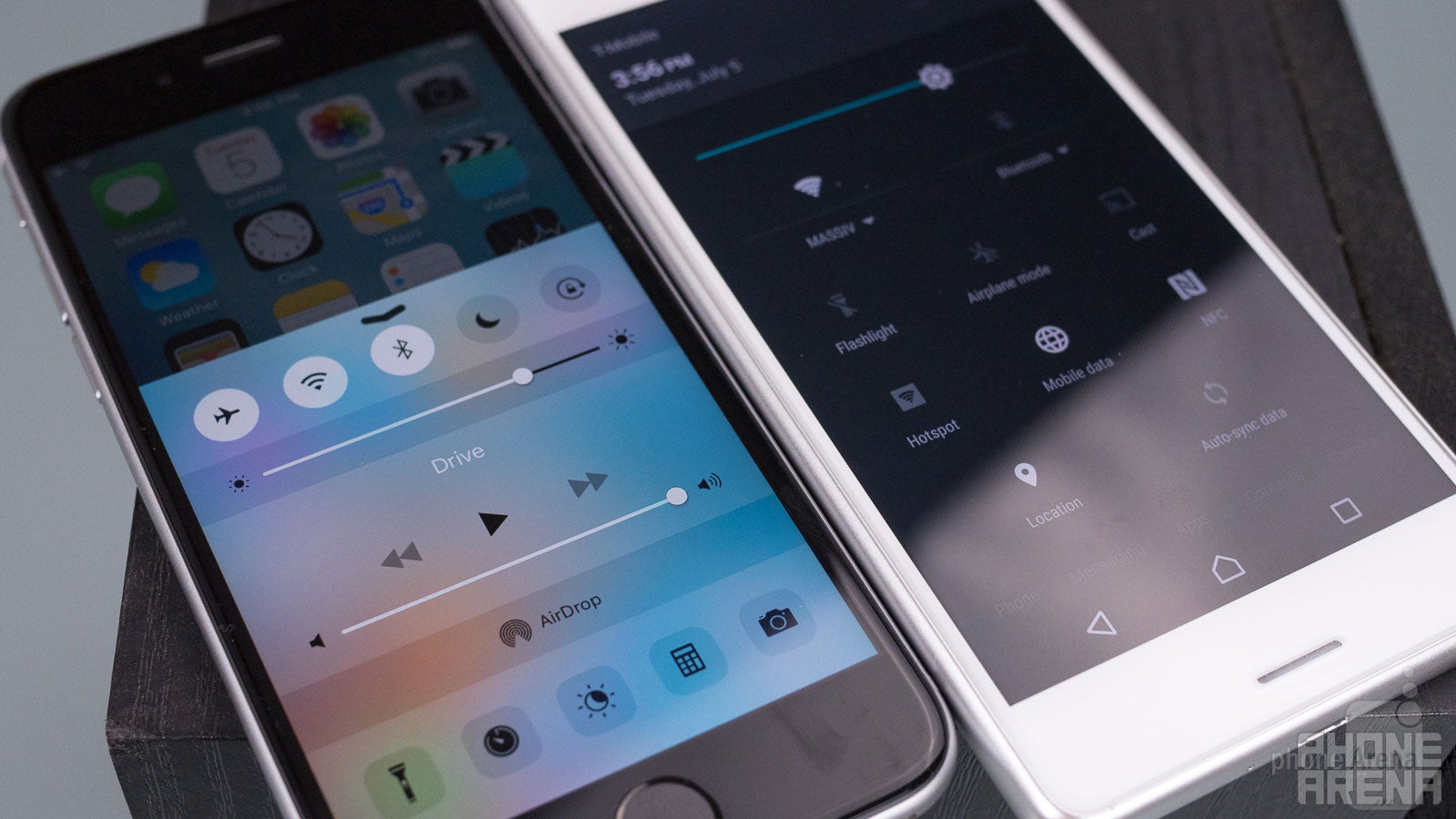
Unlike some Android OEMs, Sony's not trying to reinvent the wheel with its implementation of Google's mobile platform, and the company makes the wise decision to do very little to change how Android works. That results in a clean, familiar experience that users should be quick to pick up – while delivering a handful of tweaks sufficient to justify the effort: things like colorful new takes on system icons. Sony really encourages users to make the most of their home screens, streamlining the addition of shortcuts to suggested apps, and providing some convenient widgets for things like its music player and Lifelog activity tracker.
With iOS 9, Apple's also giving us a familiar platform, and one well-honed over the years. With less of an emphasis on customization, and more attention being paid to strict UI organization and logic, iOS 9 presents a more sterile, yet remarkably easy-to-approach smartphone environment. There are still polarizing decisions found here, though, such as some camera settings being buried in a Settings app sub-menu, instead of being found in the Camera app itself.
Processor and Memory
With a Snapdragon 820 at its core, Sony's Xperia X Performance should be one very capable handset, and by and large we aren't let down. Even up against Apple's A9, Qualcomm's chip holds its own, and benchmark tests showed a back-and-forth where the iPhone and Xperia X Performance traded wins against each other.
Subjectively, Apple does have a very noticeable edge in overall pace and fluidity, probably due to how well-tuned iOS is for the company's hardware.
Sony's phone has an extra gigabyte of memory on Apple, but you likely won't immediately feel its impact. Maybe more relevant is the storage situation, with Sony offering a single 32GB option to Apple's 16GB, 64GB, and beefy 128GB configurations. But while Apple may win with built-in storage (for shoppers willing to pay up), Sony gives users the ability to add hundreds of additional gigabytes by way of microSD card, and the phone's no-tool-required card tray makes swapping them a snap.
Internet and connectivity
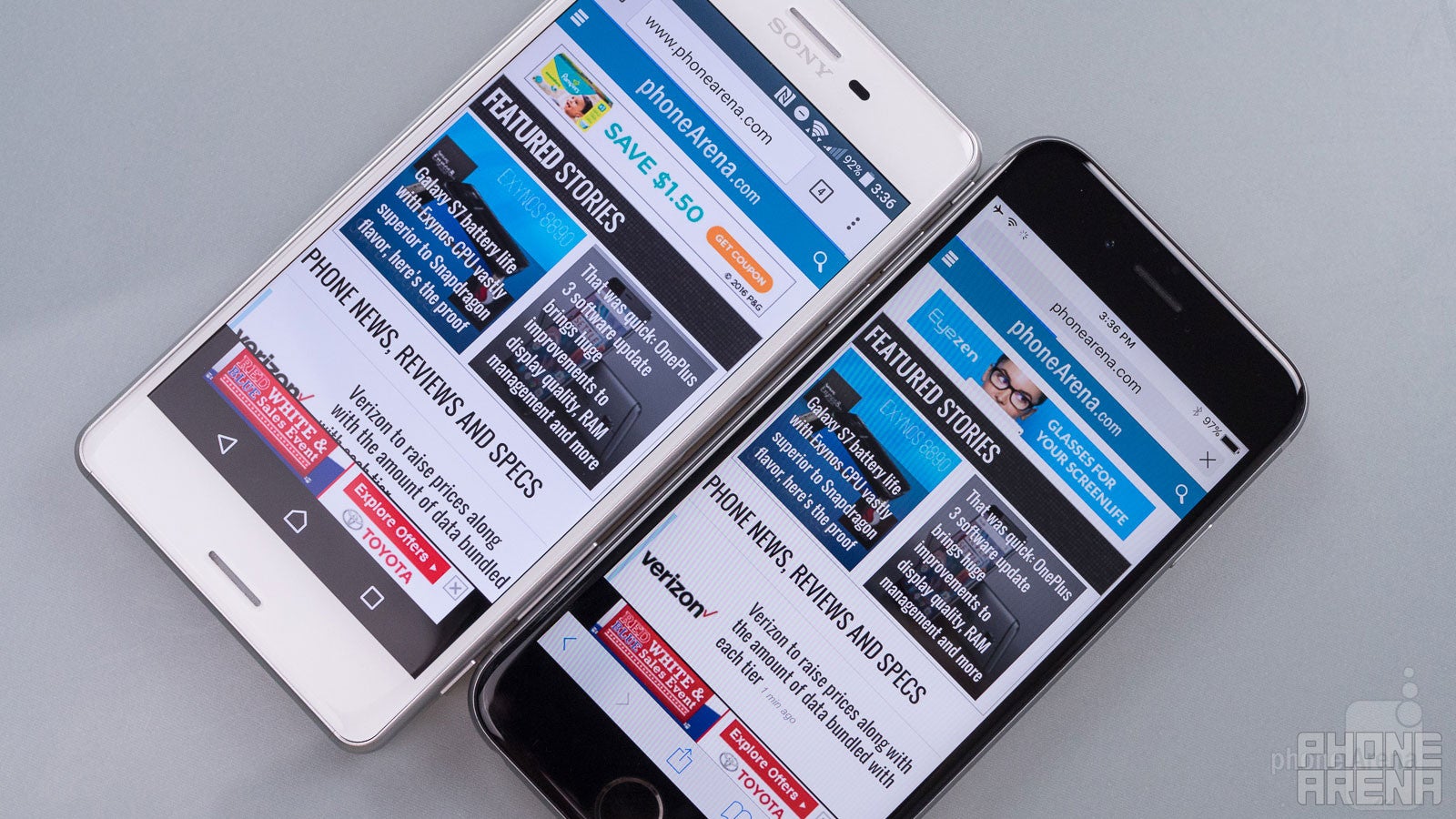
Safari vs Chrome is a comparison we've seen before, and Sony's not doing anything with the Xperia X Performance to change our expectations. While browsers are largely a matter of personal taste, it's worth noting Apple's advantage of Safari's killer JavaScript speed.
Similarly, connectivity options don't deliver much in the way of surprises: both models provide the Wi-Fi and Bluetooth options we look for, and despite the Xperia X Performance's metal back, Sony manages to come through with NFC support again – albeit using the phone's face as you tap and pay.
Apple gets convenience points for its reversible Lightning interface, while Sony's not quite ready to graduate from microUSB to the world of USB Type-C.
Sony does miss out on cellular support being quite as broad as it could be, with the Xperia X Performance skipping CDMA compatibility with Verizon and Sprint – though if you're an AT&T or T-Mobile fan, you're still in good shape.
Camera
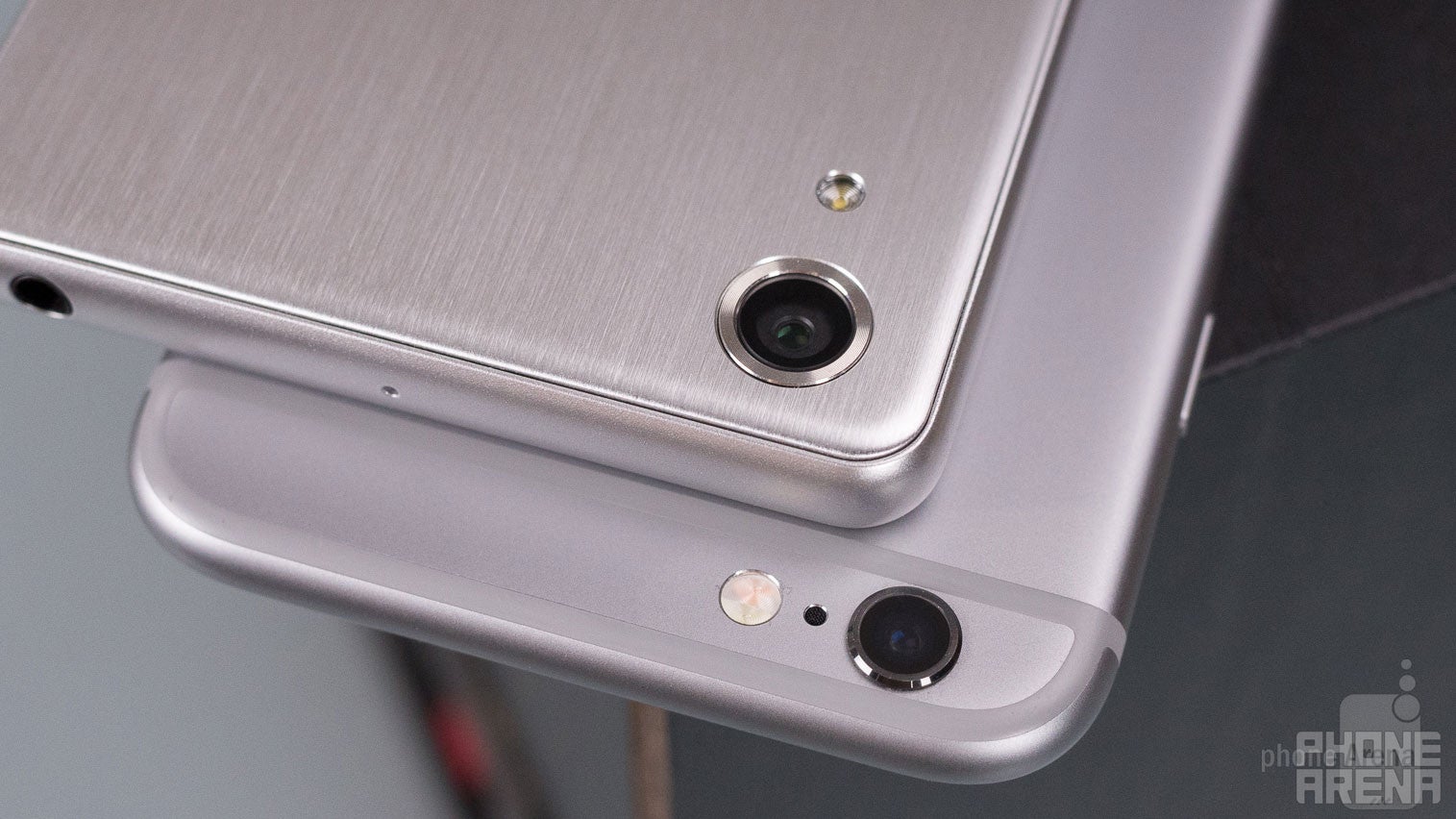
Sony really wants to believe it has a killer camera on the Xperia X Performance, and while it does a lot right, it just can't hold a candle to Apple's camera. While Sony's 23MP sensor has pixels to spare, and boasts advanced focus auto-tracking modes, the image quality just isn't there.
Initially, Apple's pics might look a little washed-out and desaturated compared to Sony's, but spend a little more time comparing the output from these two cameras and you'll find that the Xperia X Performance is delivering far too narrow a band of exposure, while the iPhone 6s really does let you see everything in the shot – even without HDR engaged.
Sony gives users a slightly wider field of view from its camera, but everything looks so much nicer through Apple's lens that it quickly emerged as our favorite.
Apple also demonstrates camera superiority when it comes to low-light performance, and while both phones produce some decent pics with the help of their LED flashes, the iPhone 6s is able to do without a flash at all in conditions where the Xperia X Performance demands it.
Sony does manage to come through when we're talking about camera software, and its manual mode is a joy to fiddle with; in contrast, Apple's camera app feels a bit too dumbed-down. Both apps can be accessed quickly though various shortcuts.
In terms of video recording, Apple's got the advantage with its support for 4K footage. That's a real shame, because there's no good reason why the Xperia X Performance shouldn't be able to shoot UHD video – and that it doesn't is nothing less than a huge oversight on Sony's part.
Multimedia

Sony hooks the Xperia X Performance up with its own media apps, including a gallery with fun-to-rearrange thumbnails, and a functional, if not particularly game-changing music player. Considering the company's media chops, we're happy to not be let down here. If you're looking to stay particularly ahead of the curve, you can even sign up to get early beta builds of the media-gallery Album app.
Apple, meanwhile, takes advantage of its role as a platform leader to deliver one extremely well-integrated multimedia experience, baking playback controls into its UI and doing its darnedest to covert iPhone owners into Apple Music subscribers.
Even with dual front-facing stereo speakers, the Xperia X Performance manages to let us down in terms of its audio output, with particularly weak performance on the low-frequency end of the spectrum. Apple's speaker may not look like much, but it's the champion here when it comes to delivering really satisfying sound.
Call quality
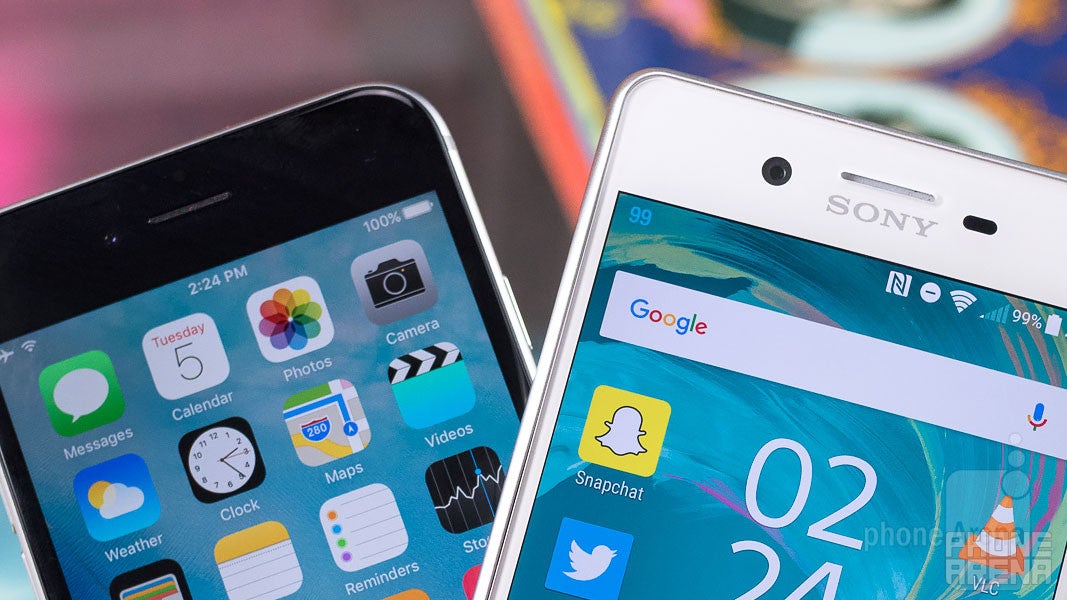
Voice calls may hardly be the main use of mobile phones these days, but that doesn't mean we're about to take their support for granted.
Both the Xperia X Performance and iPhone 6s deliver acceptable voice-call quality, and while neither happened to really wow us with exceptional fidelity, the Sony handset manages to just barely edge out Apple's model with its well-balanced, intelligible audio.
Battery
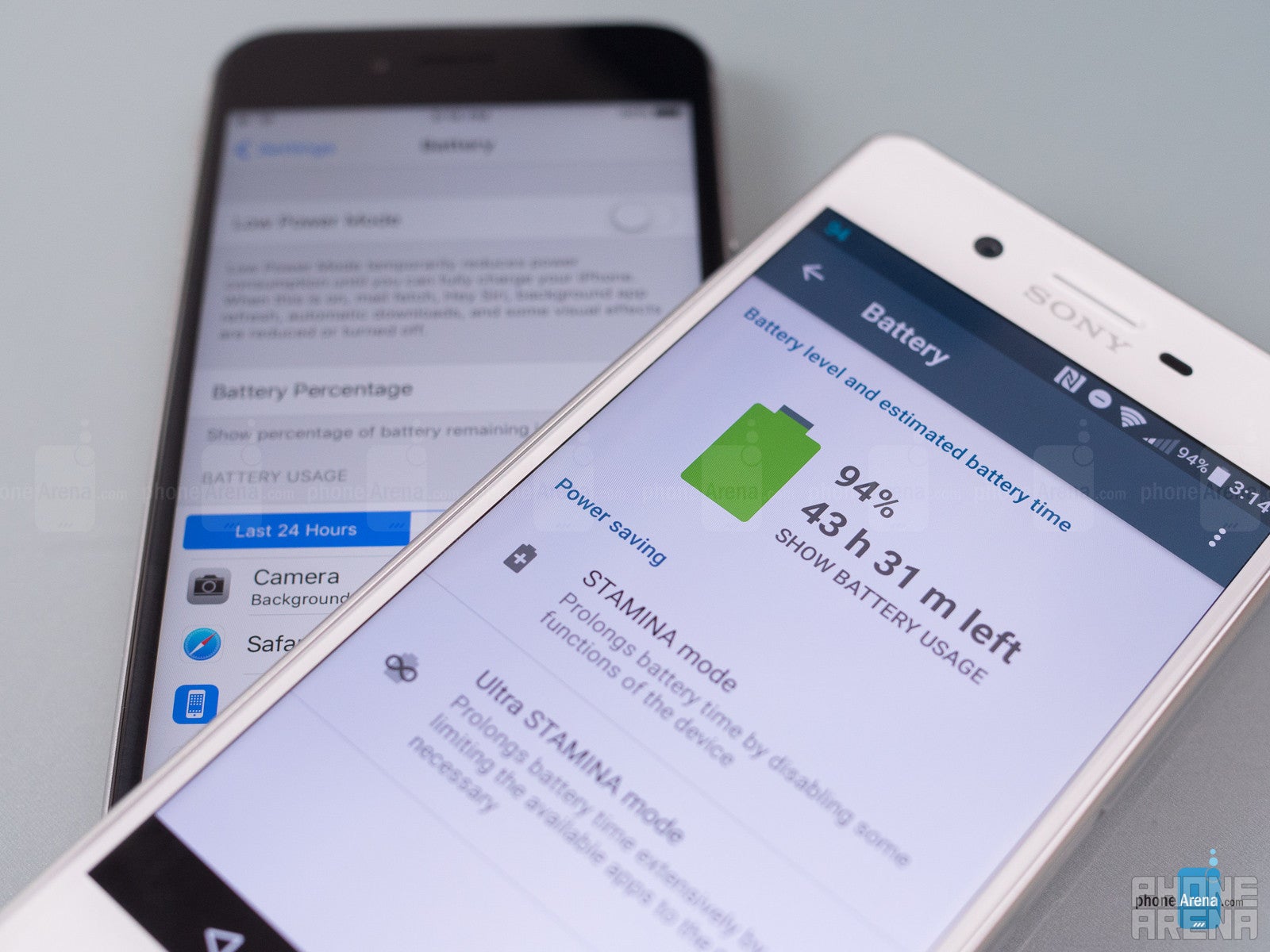
There's a plus side for Sony in all this, as while its 2,700mAh battery may not go quite as far as Apple's 1,715mAh component, the Xperia X Performance is able to take advantage of quick charging, and using the included adapter the phone was able to achieve full charge in just over two hours – while the iPhone still had another half an hour to go before reaching 100 percent.
That trade-off represents a balancing act that's going to weigh more or less on less on your purchasing decision depending on just how hard you push your phone throughout the day, but we wager more users are going to prefer the iPhone's longer battery life to the Xperia's slightly speedier charging.
Conclusion
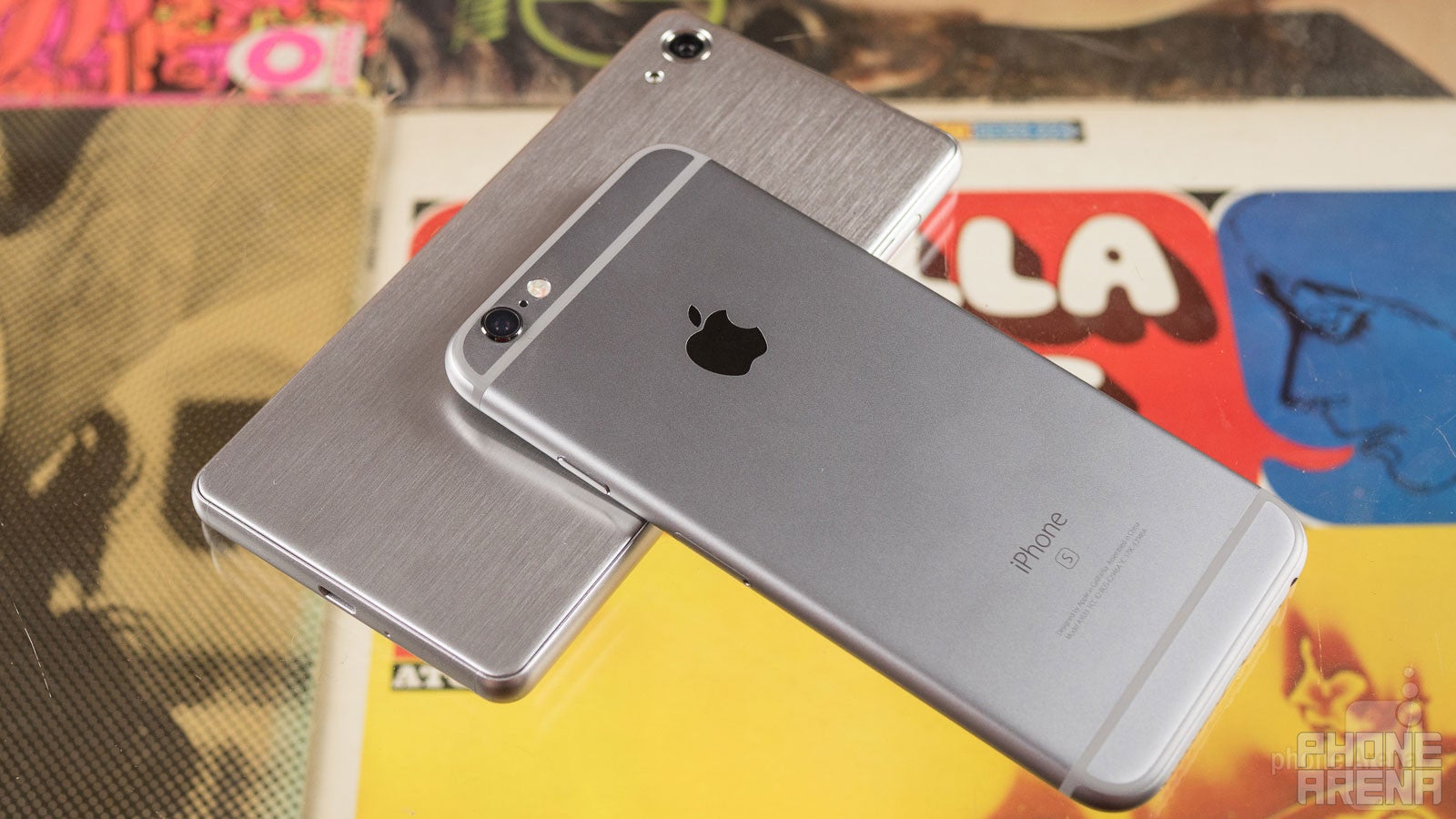
Looking at all these comparisons individually, Sony's model ended up coming a lot closer to competing on the same level as Apple's market-leader than we ever expected it might, and even where one phone pulled ahead of the other in all the various aspects we considered, the gap was quite narrow at times.
But while the Xperia X Performance puts on a solid showing, it's impossible to ignore the iPhone 6s's superior display, better audio performance, extended battery life, and higher build quality.
Had Sony's phone come in priced $100 or so less than the iPhone, we might be able to start overlooking some of those issues – and if we were flirting with $500, the Xperia X Performance might even start looking like a worthy alternative.
Unfortunately for Sony, it's decided to sell its phone for more like $700, instead. And with iPhone 6s pricing starting at just $650 (albeit for the lowly 16GB model), it's hard to see Apple's phone as anything other than the indisputable winner here.
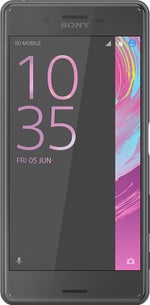


























Things that are NOT allowed: